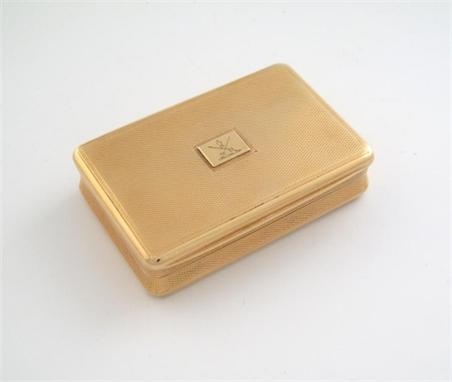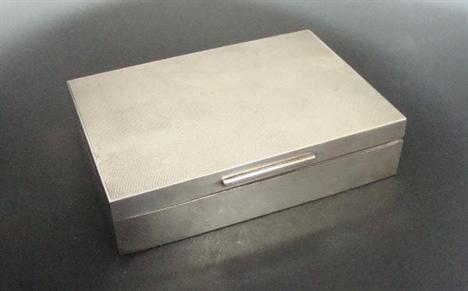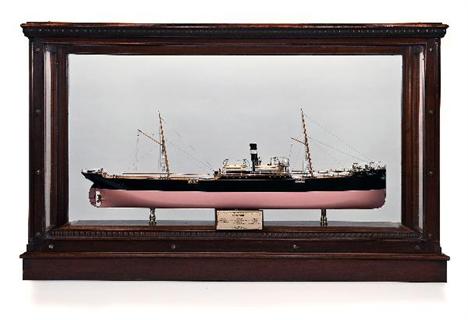186062 Preisdatenbank Los(e) gefunden, die Ihrer Suche entsprechen
186062 Lose gefunden, die zu Ihrer Suche passen. Abonnieren Sie die Preisdatenbank, um sofortigen Zugriff auf alle Dienstleistungen der Preisdatenbank zu haben.
Preisdatenbank abonnieren- Liste
- Galerie
-
186062 Los(e)/Seite
Good Empire ormolu and bronze figural two train mantel clock, the movement with outside countwheel, silk suspension striking on a bell, the 2.75" engine turned gilt dial within a globe casing supported by the running figure of Father Time holding an ormolu scythe and upon a red marble and ormolu stepped stand with egg and dart cast frieze, 18.5" high
French ormolu two train mantel clock, the movement with outside countwheel and striking on a bell, the 3.25" dial signed Pons a Paris on a plate to the engine turned centre within an ormolu foliate bezel surmounted by swans over an arched recess fountain modelled with a classical bearded head issuing a spiralled glass rod imitating a jet of water, operated by a lever to the side of the clock, supported upon a rectangular stepped case with egg and dart cast frieze and scroll shaped feet, 14.75" high
A George III 18 carat gold presentation snuff box by John Linnit London 1817 rectangular form engine turned decoration with a raised crested rectangular cartouche the interior inscribed 1849. Presented by the Members of The West Kent Cricket Club to Herbert Jenner Esq. length 7.8cm approx. weight 117g.
[ROBERT FALCON SCOTT] THE 1902-3 BRITISH ANTARCTIC EXPEDITION: THE SHIP`S BELL FROM THE ROYAL GEOGRAPHIC SOCIETY SPONSORED STEAM YACHT MORNING (EX-MORGEN), RELIEF SHIP TO CAPTAIN SCOTT`S DISCOVERY cast in brass with moulded rim and filled lettering over a semi-circle reading S.Y. "MORNING" 1902 R.G.S., clapper with rope sally, secured to a brass bracket for bulkhead securing - 10 x 10in. (25.5 x 25.5cm.); together with a British School painting of Morning underway off a headland with shipping beyond, signed `Harker` (lower right) - 23 x 34in. (58.5 x 86.5cm.) Framed; and a quantity of ephemera including a photograph of Morning. Although her name is not so instantly recognisable as those other Antarctic stalwarts Discovery, Endurance and Terra Nova, the little steam auxiliary Morning has nevertheless earned her place in the modern history of polar exploration. Originally designed as a wooden screw-assisted whaler with a barque-rig, Morning was built by Svend Föyn at Tönsberg, Norway, and launched bearing the name of Morgenen in 1871. Registered in Tönsberg at 452 tons gross (293 net), she measured 145 feet in length with a 31 foot beam and was owned and operated by her builder until his death almost thirty years later. In the mid-1890s, her ageing 80hp. engine was stripped out and she became a pure sailing vessel until, in October 1901, she was purchased by Sir Clements Markham, K.C.B., President of the Royal Geographical Society [R.G.S.] and probably the greatest exponent of Antarctic exploration of his day, for £3,880. He regarded her as the ideal supply ship for his forthcoming expedition under Captain Robert Falcon Scott, R.N., and she was given a new 84hp. compound engine by Nylands Værksted before leaving Norwegian waters. Upon arrival in the Thames, she was rechristened Morning as befitted her new nationality before being expensively fitted out for the `Great White South` by Messrs. Green of Blackwall at a cost in excess of £7,000. Captain Scott and the members of his [first] expedition sailed from London in the summer of 1901 in Discovery and, after a final call at Lyttleton, New Zealand, entered the Ross Sea and discovered Edward VII Land in January 1902. In July that year, Morning left the East India Dock bound for the Antarctic and, crammed with supplies of every description to feed and equip Scott and his men, arrived in the Ross Sea on 25th January 1903. Unable to berth next to Discovery due to ice, the stores she had brought were sledged across to the waiting Scott and, after an exchange of news, Morning departed as quickly as she had come lest she too became entrapped. The decision as to whether Discovery should winter in the Antarctic had been left to Scott but when his ship found herself unable to break free of ice in the MacMurdo Strait after the first winter, the R.G.S. despatched Morning [along with Terra Nova] on a second mission to relieve Scott and his party. The two ships arrived off the base camp on 5th January 1904 but, fortunately, Discovery was soon able to free herself and the three ships returned home in company. During both voyages to the Antarctic in 1902-04, Morning was commanded by Captain William Colbeck, R.N.R., with Edward Evans (later Lord Mountevans) as her Navigating Officer. The latter was to come to prominence on Scott`s second expedition (1910-13) but his earlier time in Morning gave him much valuable experience. Shortly after arriving back in England, Markham sold Morning and she was bought by Robert Kinnes of Dundee who returned her to commercial use as a whaler. In 1910, under Captain Adams, she had a remarkably successful season when she caught seven large whales in four days in Jones` Sound (Greenland) whereas 1913 proved a disaster when she returned home to Dundee with nothing. Still afloat at the start of the Great War, Morning disappears from record soon afterwards although she is not noted as a War casualty. Despite being "so underpowered, she had to stop the engine to blow her whistle", Morning`s name has endured in Polar folklore and will forever be associated with that heroic era of Antarctic exploration at the dawn of the twentieth century.
AN EARLY 19TH-CENTURY EBONY 11IIN. RADIUS VERNIER OCTANT the ivory scale divided to 100¡ on Ramsden`s dividing engine (foul anchor mark to centre), braced index arm, interchangeable shades, pinhole sights, pencil and note plaque behind, contained within a fitted keystone case with mid-19th century trade label for R.M. Barrett over an earlier example in lid - 15in. (38cm.) diameter
A BUILDER`S MODEL FOR THE TANKER S.S. BATOUM, BUILT BY LAING OF DEPTFORD WITH ENGINES BY JOHN DICKINSON OF SUNDERLAND FOR A. SUART, 1893 the carved hull with lined varnished decks, silvered fittings as appropriate, open bridge with awning stanchions, gantries, covered hatches, rudder chains, raked masts and other details, mounted on four silvered columns within period mahogany display case with moulded trim and plates (plates later, overall cleaning and restoration) - 35 x 59 x 19Iin. (89 x 150 x 49.5cm.) overall. Launched on the 29th June 1893, Batoum was registered at 4,054 tons and measured 345 feet with a 44N foot beam and drew 29 feet. Powered by a single screw engine supplied by John Dickinson & Co. of Sunderland, she had a near-miss early in the war when, on the 18th July 1915 two and a half miles off Southwold, she was torpedoed. Managing to beach herself on a shoal, she was refloated on the 24th July and repaired. On 19th June 1917 she was torpedoed a second time six miles south of the Fastnet rock and this time foundered.
-
186062 Los(e)/Seite























![[ROBERT FALCON SCOTT] THE 1902-3 BRITISH ANTARCTIC EXPEDITION: THE SHIP`S BELL FROM THE ROYAL GEOGRAPHIC SOCIETY SPONSORED ST](http://lot-images.atgmedia.com/SR/35440/2777280/237_468x382.jpg)

